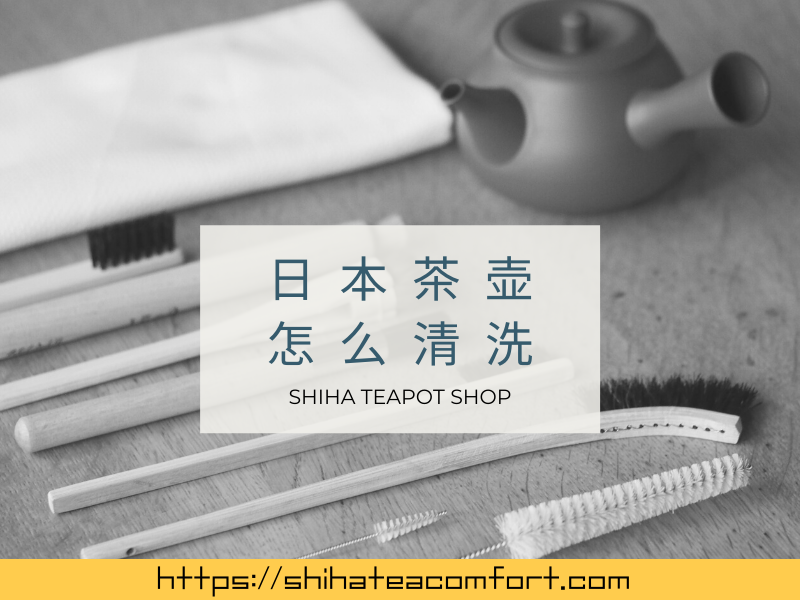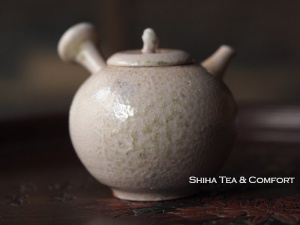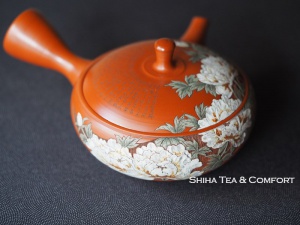How to Wash & Care Japanese Kyusu Teapot Properly (Cleaning & Maintenance Unglazed Tokoname Clay Teapot)
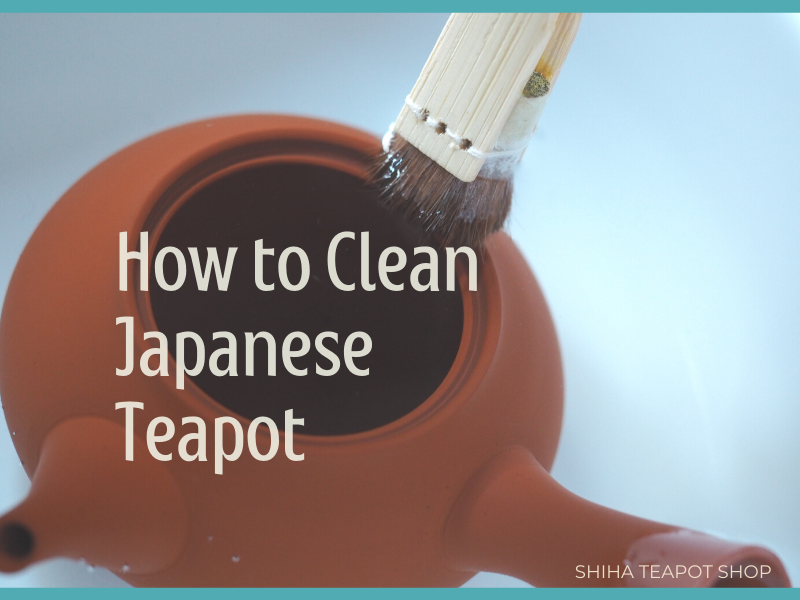
Hello. We are SHIHA TEAPOT SHOP in Japan.

We introduce how to care for unglazed teapot, such as Tokoname ware and Banko ware of Japan. Please refer this article when you self-care your teapot.
Type of teapots we talk here is ones with built-in ceramic filter.
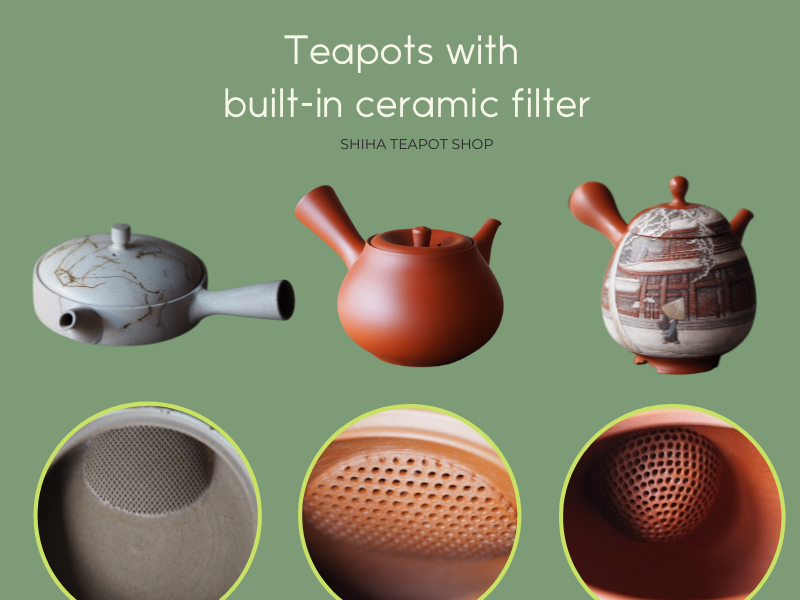
Contents 目次
Reasons for Caring for Your Teapot
- Positive effects of the clay on the tea
- Maintain hygiene
- Keep beauty – Bring joy
- Feeling of security
- Nurturing
Since the unglazed teapot is not glazed, the clay and tea leaves come into direct contact. Clay influences the taste of tea. By taking daily care and keeping the teapot clean, you can maintain the positive effects of the clay on the tea.
Also, by maintaining hygiene, you can have tea with peace of mind. And maintaining beauty brings joy.
Using a clean and well-maintained teapot gives you a sense of security not only for yourself but also for your guests.
By caring for teapot well, the teapot will become a deep and rich like antiques.
Thinking about the appearance of the teapot in five years, ten years, you will enjoy taking care of the teapot itself. It is a part of nurturing teapot.
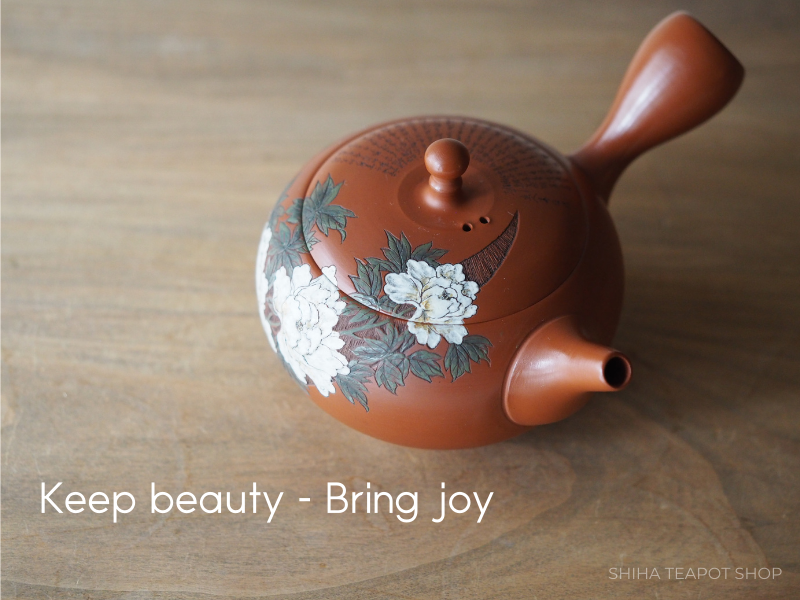
Tools for Caring for a Teapot
- Brushes
- Towel
No need to use detergent.

For cleaning of a teapot, you can use brushes and a towel. This article use the following brushes to introduce the way to clean a teapot.
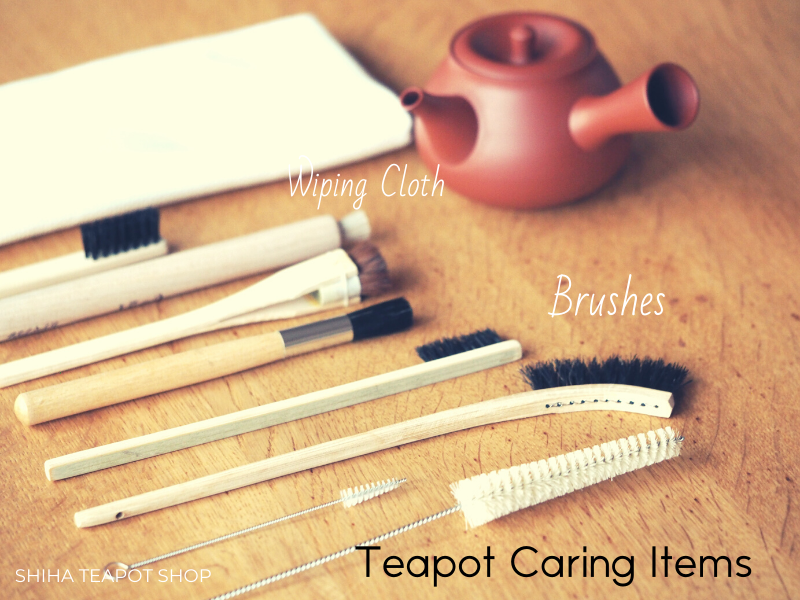
About Brushes
Those brush bristles are made of natural materials, mainly horse, pig, and goat hair.
Those materials are gentle to teapots. The bristles are easy to wear (be worn away), so that they are not hard on a teapot.
About Wiping Cloth
It is better to choose a cloth or paper towel that are soft, absorbent, and does not produce fluff.
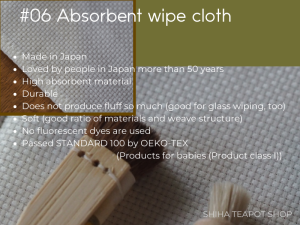
Brushes and wiping cloth of our recommendation are purchasable at SHIHA TEAPOT SHOP online store
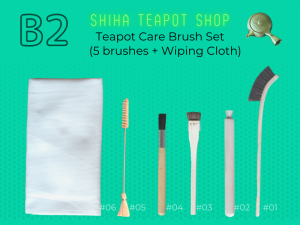

Precautions for Using Brushes
Precautions
- Do not use brushes when it is dry. Brushes should be used wet (Some brushes become soft when wet.)
- Use brush with gentle motion, and do not scrub.
Maintenance of brushes
- Do not wash in hot water. It will damage the animal hair brushes.
- Do not use chlorine detergent on the brushes, some will dissolve the brushes.
- Dry the brush well after use. Animal hair and plant brushes are more delicate than synthetic fibers.
- They are also more susceptible to mildew, so dry them thoroughly.
- Dry the handle of the brush (wood or bamboo) as well. If you put the brush in a brush stand with moisture in the handle, it may damage the wood or bamboo, or cause mold to grow.
Brush makers say that the best way to maintain your brushes is to use them. If you don’t use brushes long time, brushes (bristles) becomes hard and it is not good to use.

When to Take Out Tea Leaves From Teapot
When you have finished drinking the tea, remove the tea leaves from the teapot and wash them soon.
If the tea leaves are left in the teapot for a long time, it will cause tea stains and bacteria to form.
Note : The higher the room temperature, the faster the bacteria will grow on the tea leaves. Also, hot weather causes bacteria to form faster than cold weather.

If you don’t have time to wash the teapot, remove the tea leaves from the teapot and rinse the inside for the time being. Later, when you have time, wash it thoroughly.
How to Take Out Tea Leaves From a Teapot
After brewing, the tea leaves are often stays in the filter side. Tapping the outer wall of the opposite side of the filter with your palm, the leaves will fall (roll down) in clumps, it makes it easier to remove the leaves from the teapot. Just turn the teapot upside down and most of the tea leaves will come out from the teapot.



Rinsing Inside of Teapot
After removing the tea leaves from the teapot, rinse inside with running water a few times until all piece of leaves are removed.

Drain the water from the top (not spout) of the teapot first and make sure there are no tea leaves left in the teapot.
Then fill new running water and drain it from the spout. This is to wash away the tea leaves on the spout side.
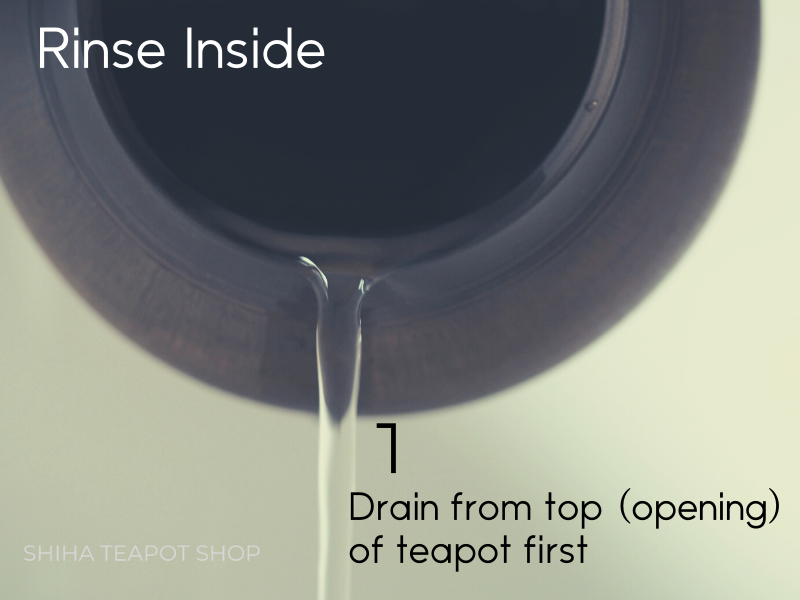
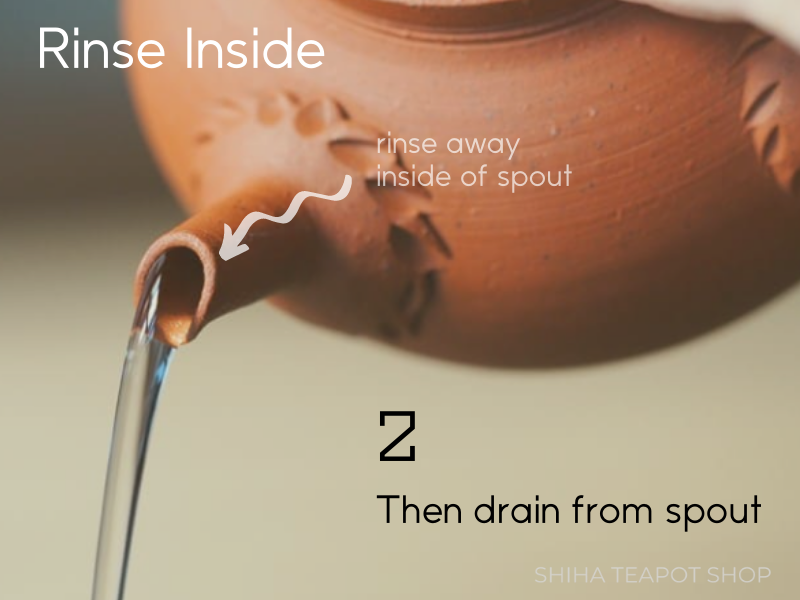
If piece of tea leaves are sticking to the inner wall, use your finger to move it then rinse again. In case tea leaves stuck and stays there, filled water in the teapot for a while to soften the tea leaves. Or you can use a brush to remove them. (“inner wall brush”)
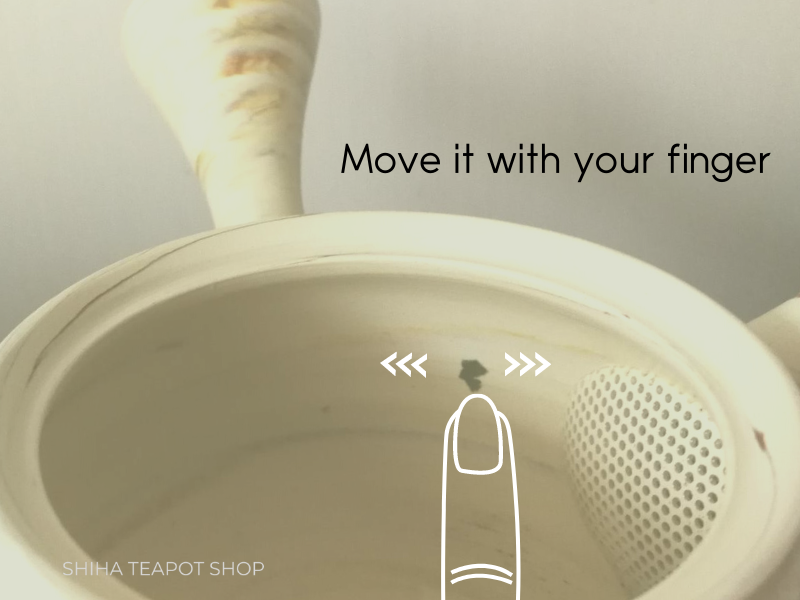
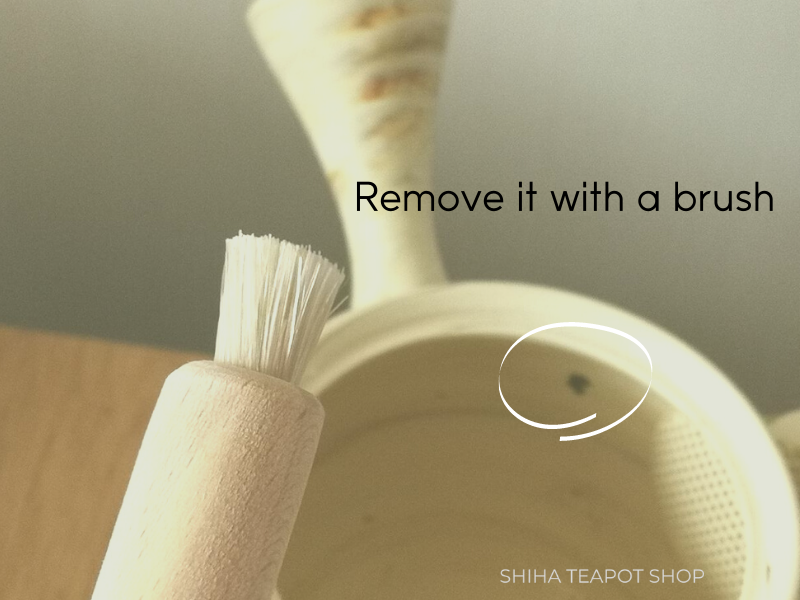
Washing Teapot
- Clean Filter (Strainer)
- Clean Lid Shelf (Lid Seat) & Lid
- Clean Surface
- Clean Spout
Cleaning Filter (Strainer)
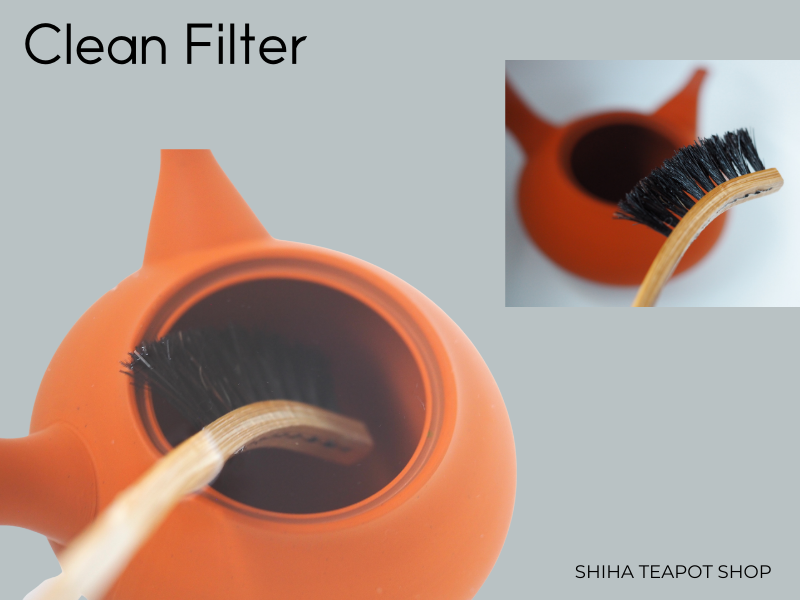
Even if the filter looks clean, tea leaves may be stuck in the filter holes.
Fill the teapot with water and sweep the surface of the filter with a brush (“filter brush”). Move the brush like sweeping away the tea leaves in the filter.
Note: Lay the brush down and gently move from right to left in one direction, then move from left to right in one direction, instead of moving it back and forth from side to side. In this way, effect is good and also it is good for brush (not get damaged).
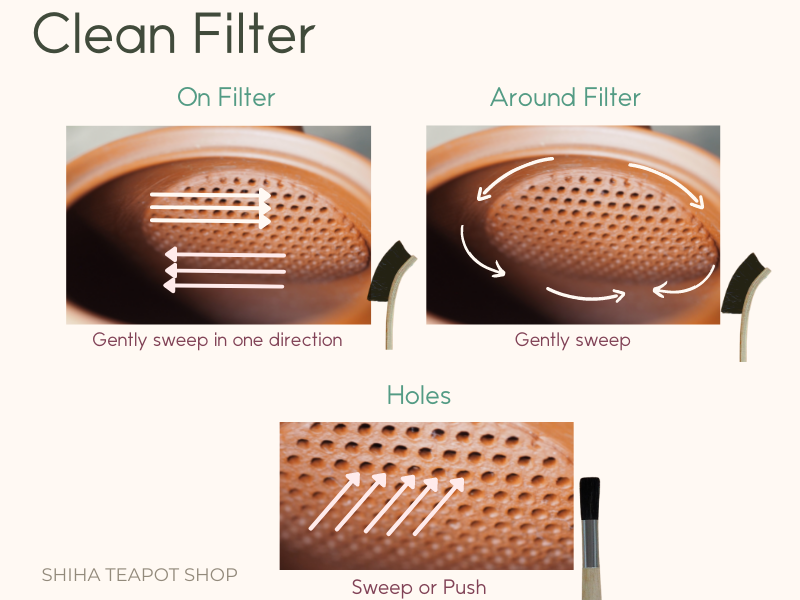
Also, gently brush around the filter (the connection part of filter).
If you still see (or suspect) tea leaves are clogged in the holes of filter, use a brush (“mesh cleaning brush”) and sweep or push the piece of tea leaves out of the filter. Do this gently as well. It may be good to fill water and do it. (depends on the case)
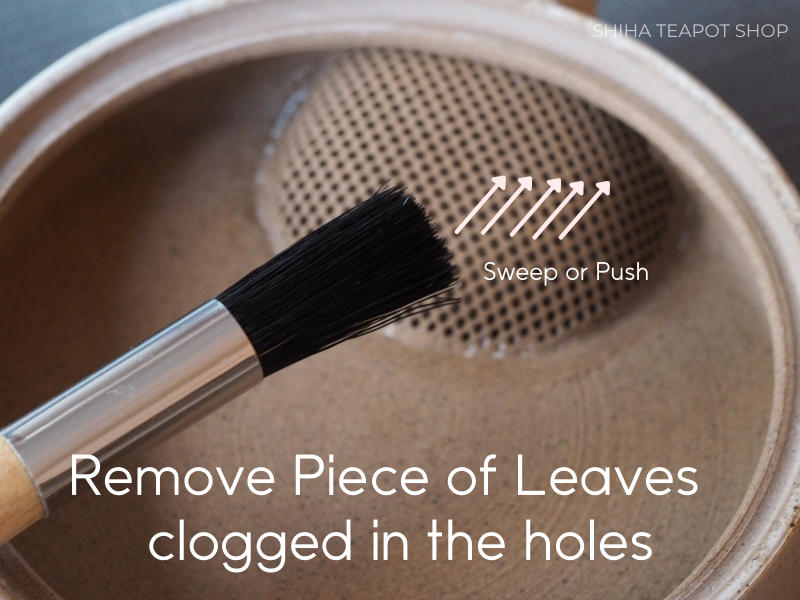
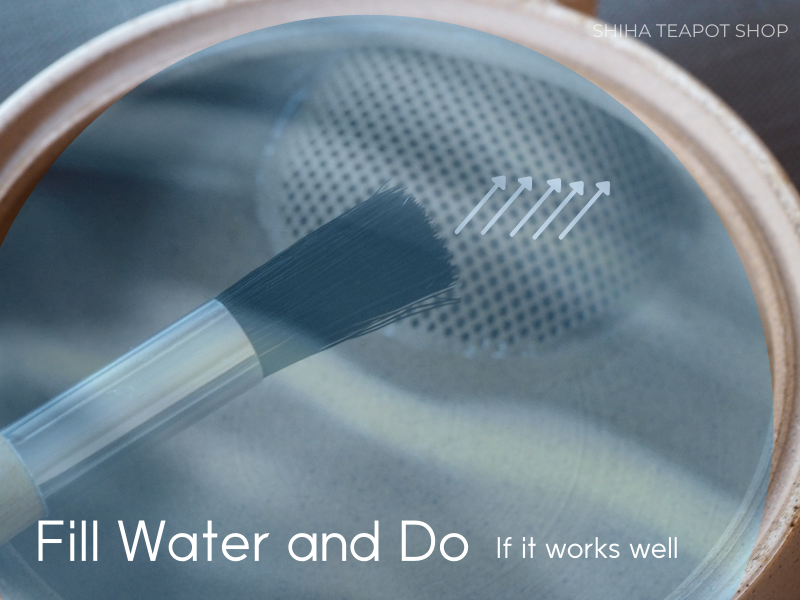
After brushing, rinse again a few times with running water drain from the top. Then make sure that no tea leaves are left inside.
Then fill water in the teapot and drain the water from spout to wash away tea leaves from the spout.
Note: You can substitute a toothbrush for filter cleaning in case.
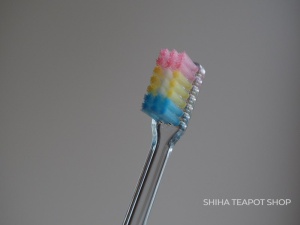
Cleaning Lid Shelf (Lid Seat) & Lid
Often there is tea liquid left on the lid shelf (Lid seat). Clean well with a brush to avoid stain. It is recommended to use soft brush (“lid shelf brush” (soft brush)).
Gently rub with the brush with running water or clean water to wash away the tea liquid and dirt. Wipe the lid shelf with a towel and make sure no dirt and stain is left on it. If the towel catches dirt, wash again.
Do the same for the lid.
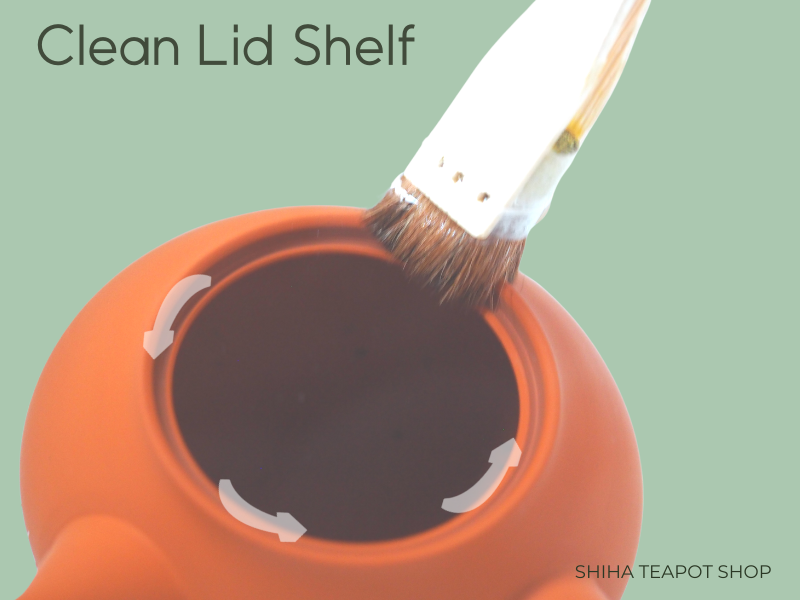
Lid shelf is the part that your eyes catch when you put tea leaves in the teapot. It is a good feeling if it is clean and no stains.
Cleaning Surface of Teapot
Clean the back of the spout and the under the spout of with a soft brush (“lid shelf brush” (soft brush)) . Those part may have tea liquid left. Be sure to clean well so that the it will not get stain. And check whole body if it is clean.
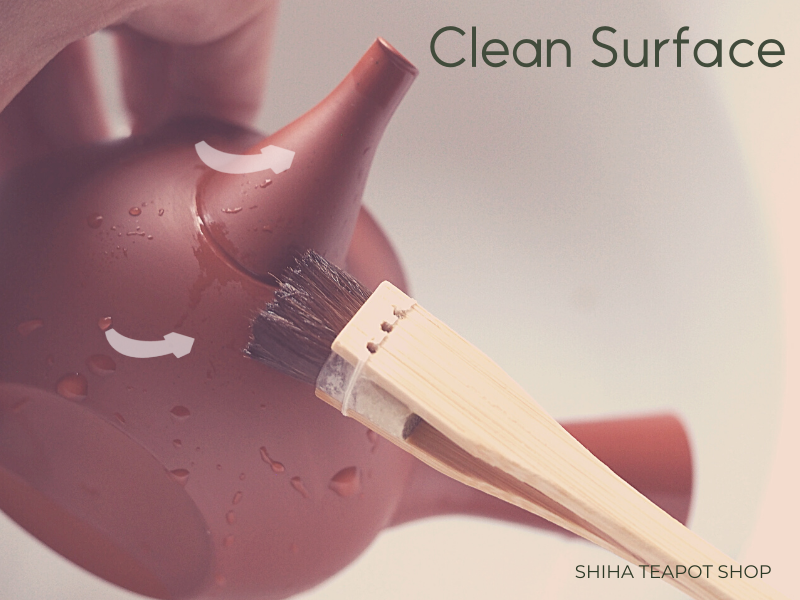
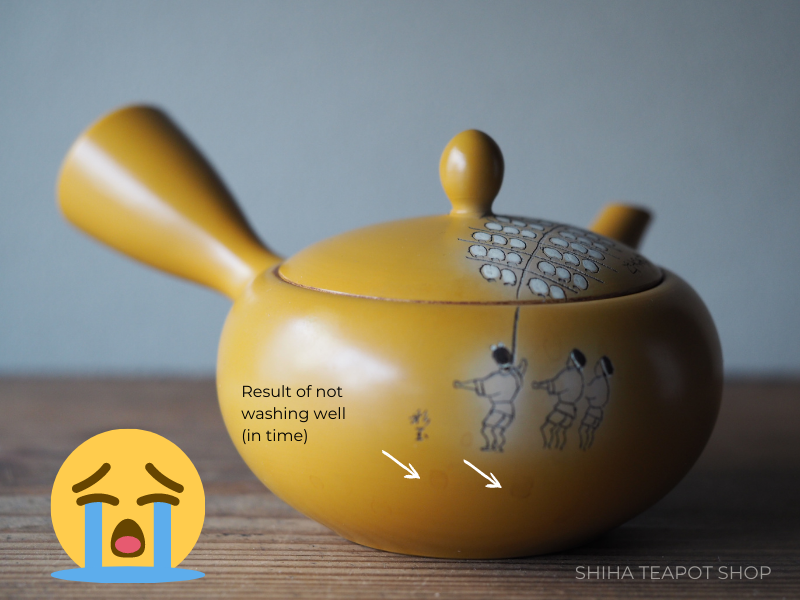
Cleaning Spout
When dirt can be seen on the spout, moisten the spout and scrub it with a wet brush ”spout brush”. Do it gently and slowly.
Choose the correct size of the brush and do not force it in to avoid damaging the spout.
Also, be careful not to put the brush in too far to avoid damaging the filter. It is better to estimate how far (length) to insert brush in spout first.
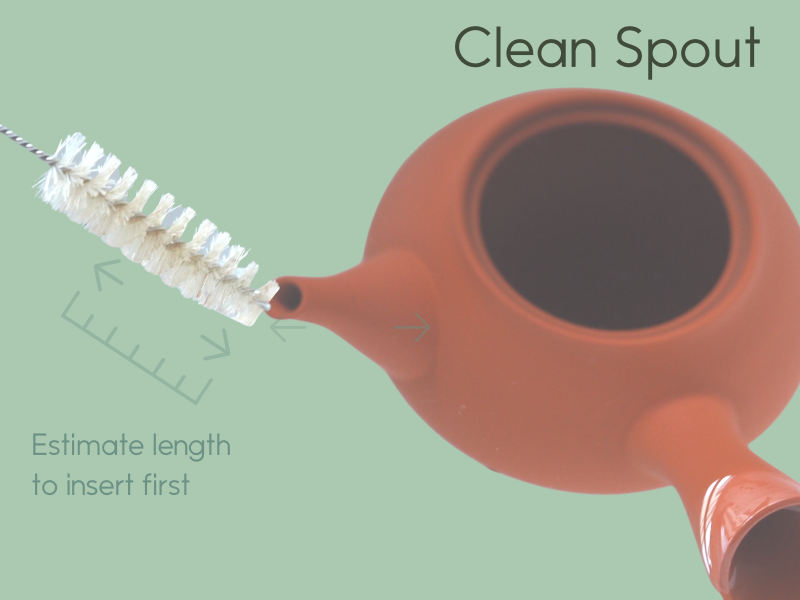
The spout is a delicate part. Be sure to clean it under daily maintenance not to get stain.
Note: It is safer to choose a brush with a rounded tip.
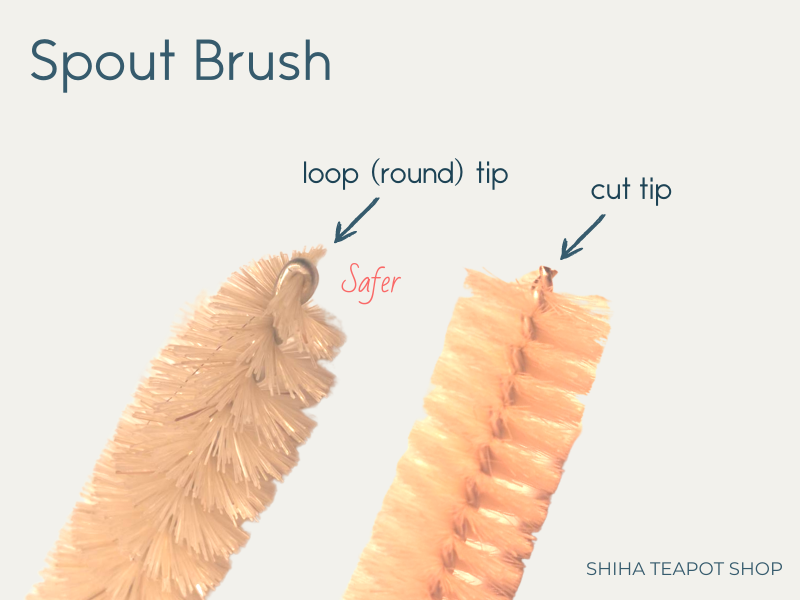

Wiping Off the Water on Teapot
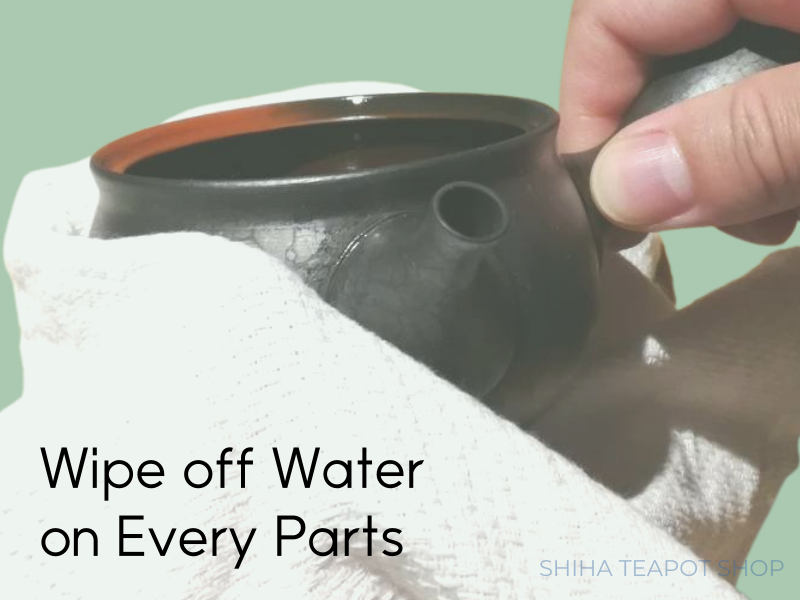
After washing, wipe off the outer surface of teapot and lid with a dry cloth. Inside of teapot should be dried naturally.
It is important to wipe away all the water on the surface in time. If water droplets remain, they will turn into water stains.
Pay attention to each part (body, lid shelf, spout, handle, inside of handle, and backside) and make sure there is no water(moisture) remained.
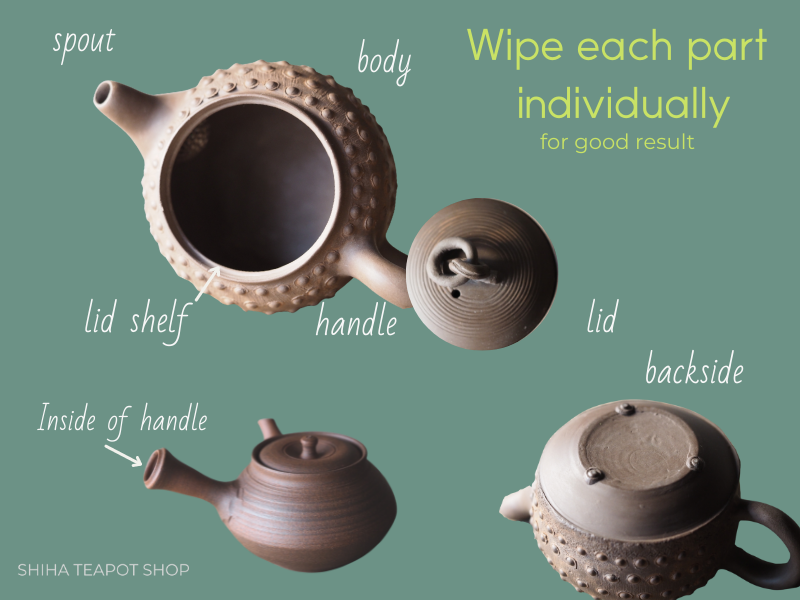
After wiping, check the entire body of the teapot if it is clean.
Note: It is recommended to use cloth or paper towel which are soft, absorbent, and does not produce fluff.
Drying a Teapot (Inside)
In Japan, it is common not to wipe the inside of teapot with a cloth, just let it dry naturally.
Tip of Drying a Teapot
- Washing teapot with hot water will speed up the drying process.
- The time it takes to dry depends on the type of clay, temperature and humidity of a room, and the ventilation environment.
- It is good for hygiene reason to dry a teapot soon.(Bacteria cannot live on dry surfaces)
- The sooner it dries, the safer it is. After teapot is completely dry, you can move the teapot (putting a lid on) to a safe place such as a cupboard.
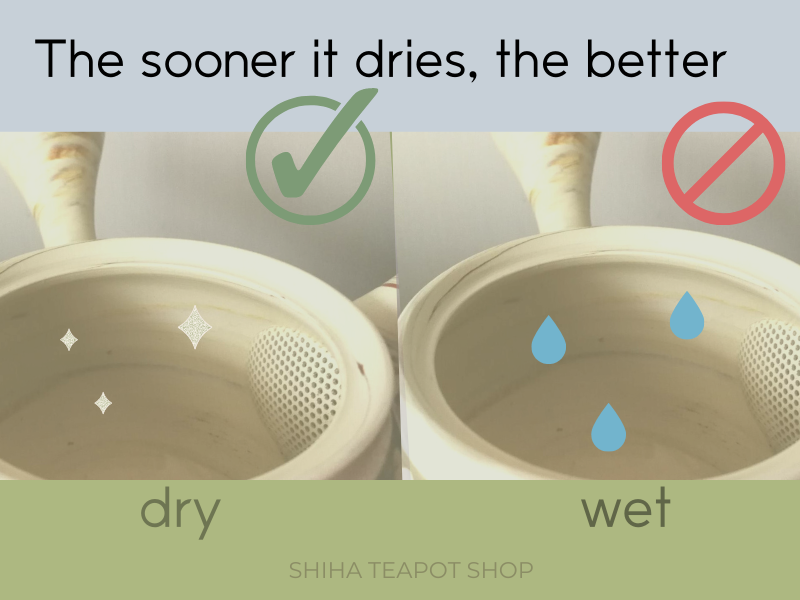
How Inside of Teapot Dries
Even after the water inside of a teapot is drained, the certain amount of water stays on the wall. This water flows downward over time and make small pool in the bottom of teapot. The accumulated water takes time to evaporate, and it keeps the inside of teapot wet long time.
It is faster to dry teapot if let out the water from teapot. Please refer next section how to place teapot after washing. There are 3 ways.
It is better to place a teapot where has good air flow to dry faster.
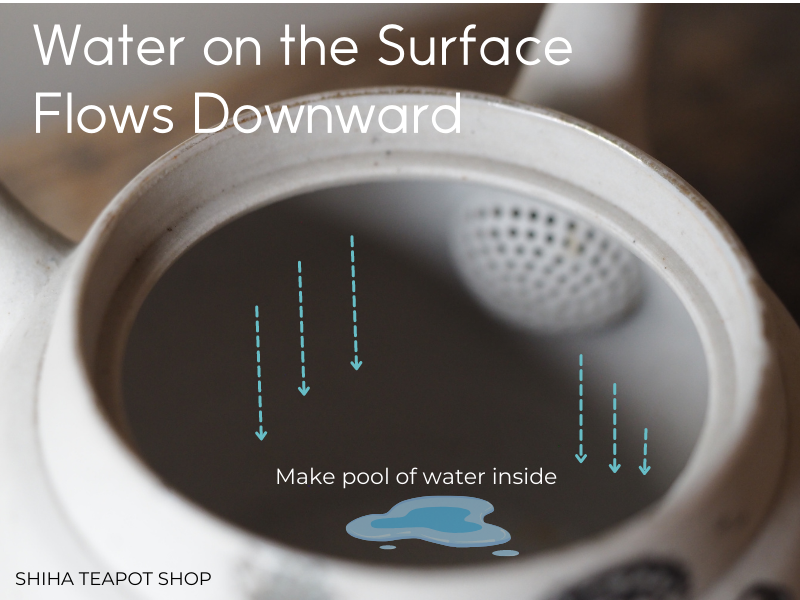
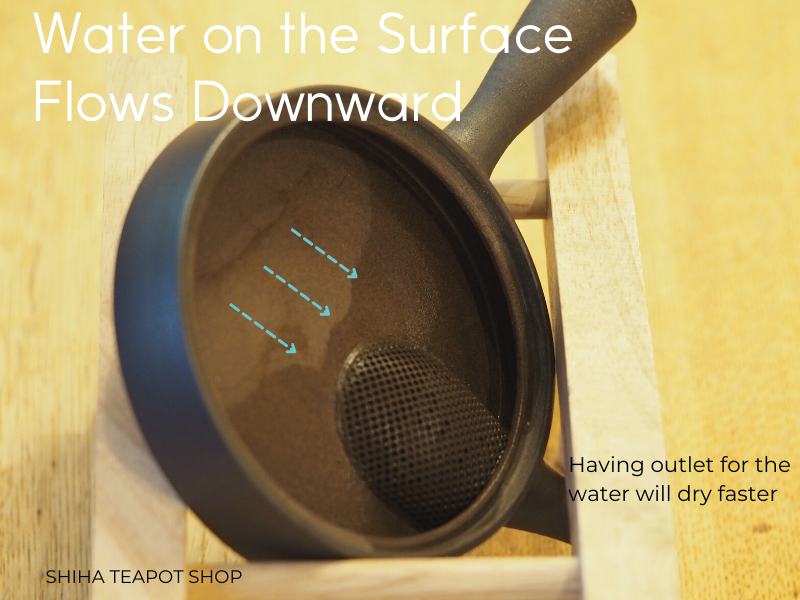
How to Dry (Using a Drying Stand)
Using a stand (such as photo below) allows the water on the surface to drain out of the spout. It helps to dry teapot faster.
Place the teapot on the stand with the spout facing downward, and leave it for a few hours or half a day. The remaining water on the surface will be drained out through the spout.


Once the inner wall is dried, move the teapot anywhere stable and safe to dry it completely. Leave the lid open until the filter and spout are dried.
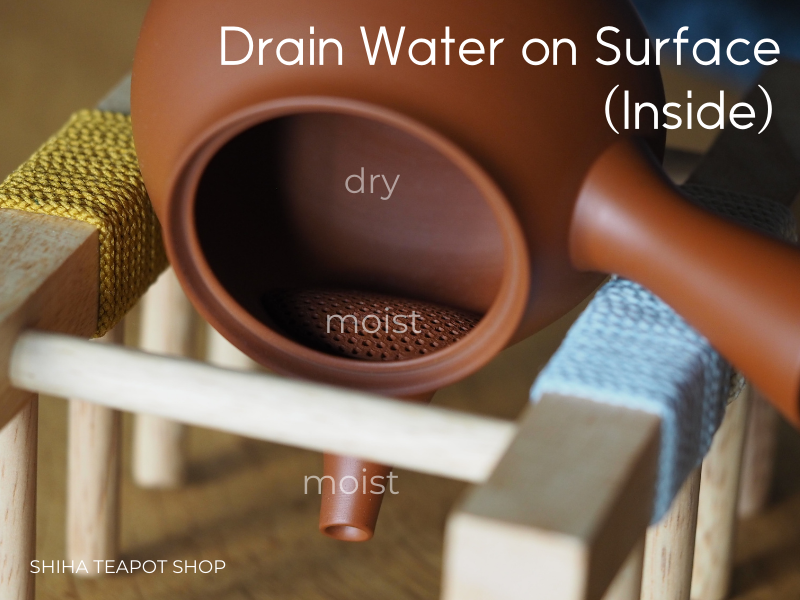

Note: You can DIY a drying stand. It is simple structure made with wood pieces. Any other things such as a wire basket can also be modified to a drying stand.
Drying Facing Up Teapot
After washing a teapot, take out lid and place teapot facing up. Water on inner walls falls and pool at the bottom of the teapot. This makes the time of drying takes longer.
In winter, when room temperature is low, it may not dry even after half a day (12 hours), in the case of Japan.
In most cases, the order of drying is as follows: first inner wall, then tea strainer, the last is the bottom.
Facing up teapot make the air flow between tea strainer and spout is good. (In comparison to facing down teapot)
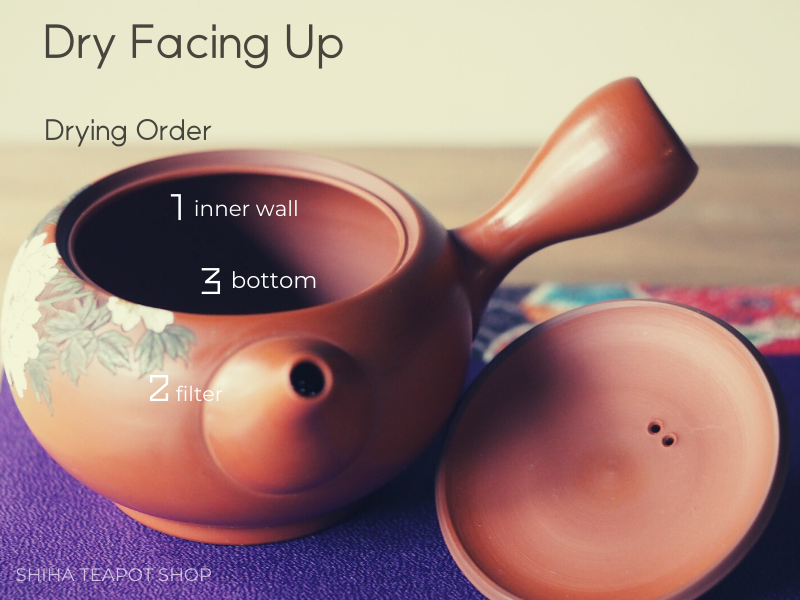
Drying Facing Down Teapot
When a teapot is faced down, the bottom will dry first, secondly inner wall.
The airflow between tea strainer and spout is not good, it takes long to dry the filter.
In many cases, water from the inner walls flow down and accumulated at the opening of the teapot. Wipe off the water around the openings after a while then place the teapot facing up. In this way, the tea strainer and spout will dry faster.
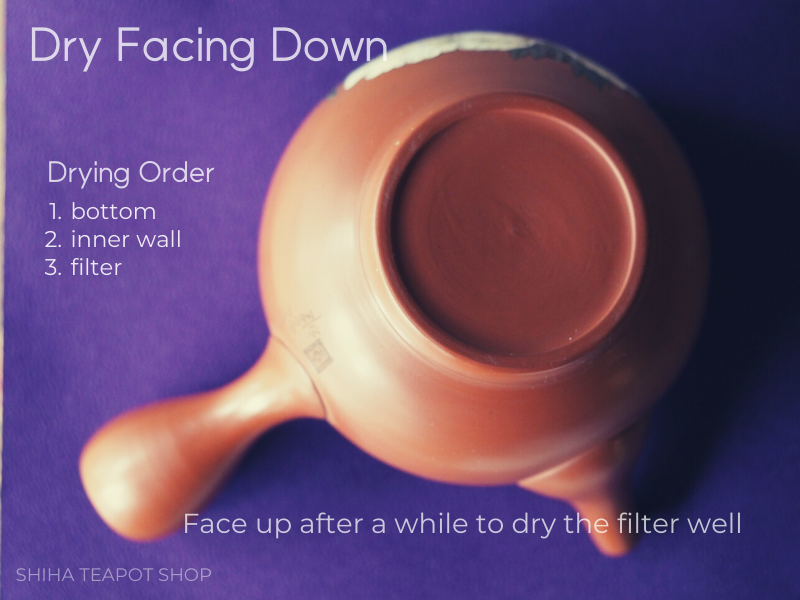
Thank you very much for reading. Hope you enjoy caring your teapot!
